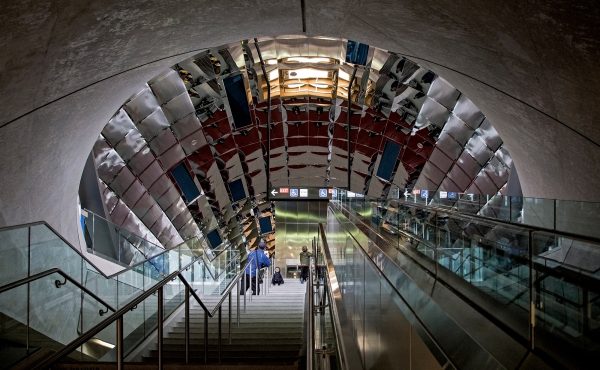
Spacing readers are probably aware of the controversy surrounding the historic wartime era hangars at Downsview Airport. Relics from the abandoned Forces base that once occupied the site, the hangars have heritage status but are not subject to normal heritage review because of their ownership by the Department of National Defence. When crews were spotted last November preparing for demolition, a coalition of Torontonians that included developers, politicians and the Architectural Conservancy of Ontario (ACO) successfully pressured National Defence into staying the demolition.
The issue arose again however on Christmas Eve when National Defence sent the ACO a letter stating that, unless someone could come up with $20,000 weekly payments very quickly, the demolition would have to commence; another letter writing campaign ensued. Demolition was again stayed and the issue returned to the back burner when a Lieutenant General wrote the ACO demanding an end to the barrage of distracting emails that were preventing him carrying on the business of administering a war.

Spacing radio host David Michael Lamb was lucky enough to get a look inside the hangars and observe more details about their current state (all the photos in the post are by him). With a multitude of possible uses, including interest from prominent historical redeveloper Paul Oberman and the nearby Canadian Air & Space Museum, the hangars remain an invaluable asset to Toronto. Beyond their potential uses, they continue to hold great historical value as monuments to this country’s war effort and to the vitality of its aerospace industry at that time. They are associated with the nostalgia of the Avro Arrow and a local monument to the stark militarization of the cold war. Their preservation and what role they can play for the city, will continue to be something to watch.




6 comments
There’s so much potential in a large, clear-span structure. In Los Angeles, a hangar was recently renovated into a performance capture studio – tell me you wouldn’t want to work there! Here it is in Architectural Record (click on the slideshow):
http://archrecord.construction.com/projects/interiors/archives/09_Performance-Capture-Studio/default.asp
Perhaps some more used car dealerships.
I’d love to try to arrange a large photographer meetup in the space – similar to the Strobist LA event that was held in an aircraft hangar out there.
Who would I get in touch with to help make this happen?
These aircraft hangars should be torn down. They are old, falling apart and it would take a lot of money to renovate them. Besides, there are limited uses for a building of this shape and size (Downsview Convention Centre, anyone?)
I go back and forth on the Downsview Lands.
Part of the time I want to rip the entire military, museum and industrial bits out of Downsview and relocate them (the Bombardier bits to Pearson or Oshawa) and create an analogue to Dublin’s Phoenix Park – a large green lung and mass event space in a part of the city that could use one, including the partial burying of the CN-GO line to allow it to be decked over. The Canadian Air and Space Museum could have its exhibits relocated to the Island Airport, creating a public use in addition to its functional use.
Part of the time the contextual argument wins – the Avro Arrow for instance, not to mention that we have enough haemorraging of industrial jobs to the 905 without actively pushing them there – and instead I would look at creating a Transportation History District, with a transit museum to complement the CASM containing examples of heavy rail, subway, streetcar, the hopefully soon to be decommissioned SRT and maybe development models of the new downtown and Transit City LRTs.
Perhaps the rehabilitated hangars could contain such a museum with funding from Orion Bus, MotivePower, CN, CP and Bombardier in thanks for the massive sums of money that has come and is coming their way from GO Transit and the TTC.
The Downsview Hangars are superb examples of WWII-era industrial arhitecture. There are no hangars and few industrial buildings that have been built in the GTA since, that are as well-designed and constructed as these buildings are. There are numerous potential uses for these buildings and it will be a travesty if they are lost.
Although we live in one of the greatest societies on the planet, Toronto’s urban landscape is not particularly attractive. Few cities of our size and relative prosperity are doing a worse job of urban design. Perhaps if we use the best examples of our past as waypoints, the way ahead will be clearer.